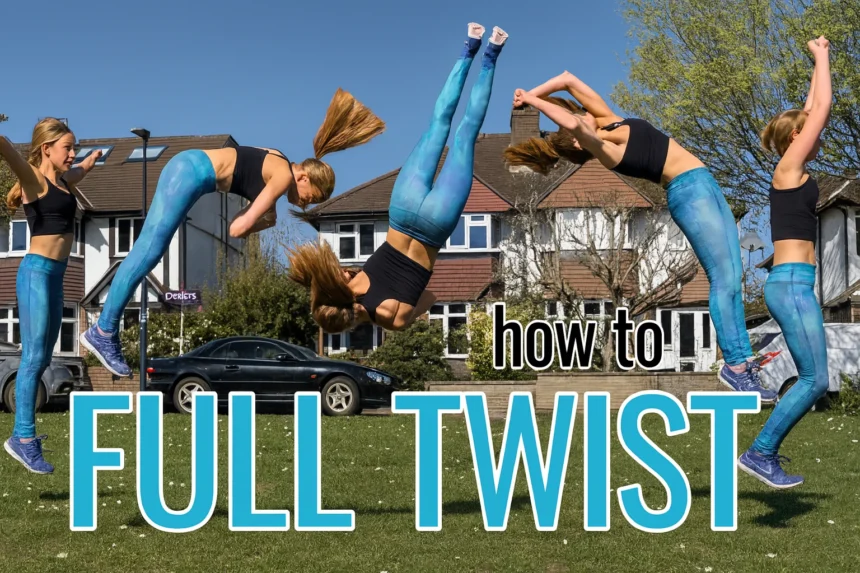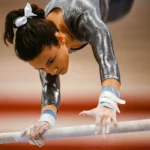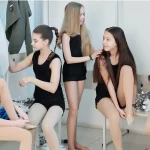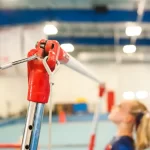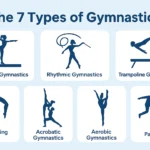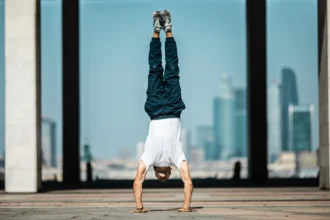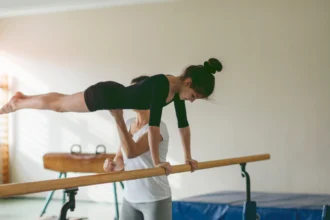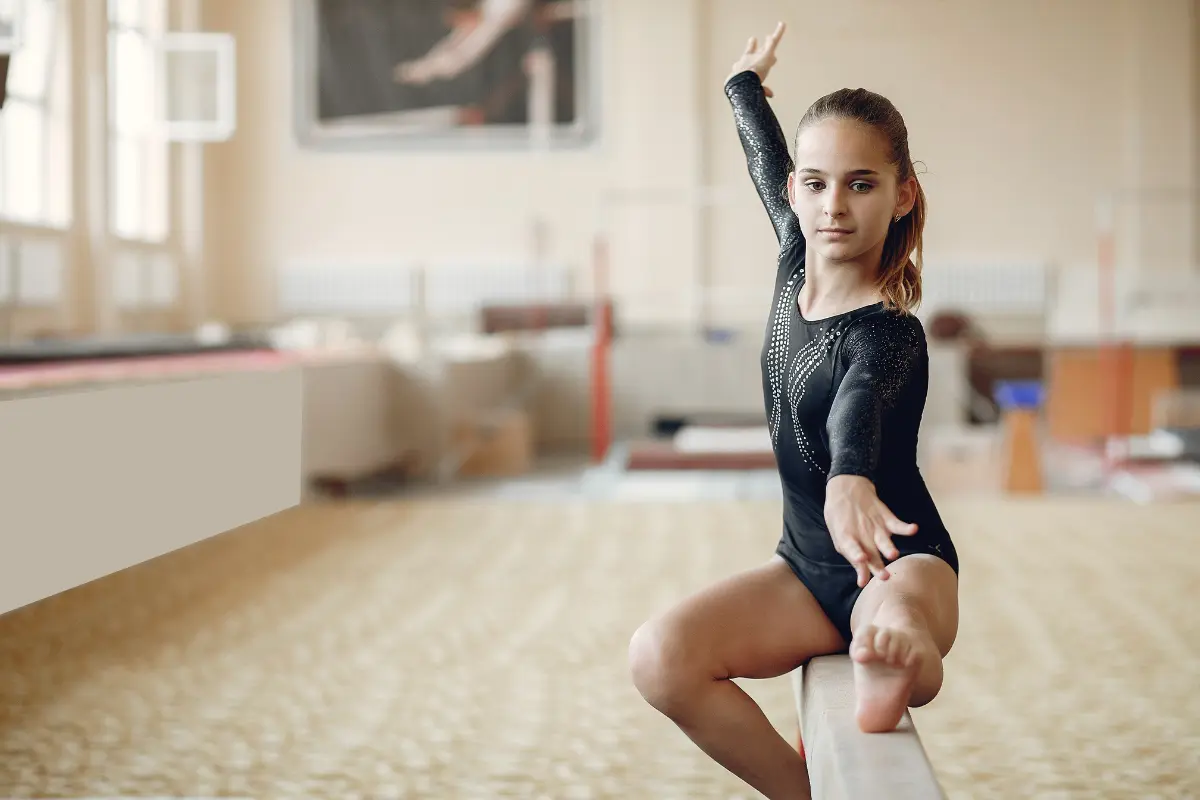In gymnastics, a full twist is a skill where the gymnast performs a backflip while twisting their body 360 degrees in the air. It combines two elements into one smooth motion: a layout salto (a straight-body backflip) and a full rotation around the vertical axis.
This twisting skill appears across multiple apparatuses and levels, from beginner optional routines to elite competitions. Let’s break it down so you know exactly what it is, how it looks, and where it’s used.
What Happens During a Full Twist?
A full twist happens when a gymnast:
- Jumps into the air (usually after a roundoff or back handspring),
- Performs a back layout flip, and
- Rotates their body one full time (360°) along the vertical axis before landing.
It’s called a “layout full” because the gymnast maintains a tight, straight-body (layout) position throughout the flip while spinning once.
How the Body Actually Twists in Gymnastics
A gymnast doesn’t twist simply by “spinning” like a top. In reality, twisting is a biomechanical conversion of momentum—a sophisticated process involving body positioning, arm motion, and core control.
You start with a regular backflip, but to add the twist, you tilt your shoulders and hips just a little. That small tilt helps your body start turning in the air. Then, by pulling one arm across your body and using the other for balance, you create the spin.
The tighter you stay, the faster you twist—kind of like how a figure skater spins faster when they pull their arms in. When everything is timed right, your twist feels smooth and controlled, and you land with confidence.
Is It a High-Level Skill?
Yes, but it’s also considered a gateway skill. It’s not the hardest, but it’s essential. Here’s how it ranks in difficulty in the 2025–2028 Code of Points:
| Discipline | Apparatus | Skill Example | Value |
|---|---|---|---|
| WAG | Floor | Layout full twist | D |
| WAG | Vault | Yurchenko layout full | 4.6–4.8 |
| WAG | Beam | Full-twisting dismount | C |
| MAG | Floor | Layout full twist | C–D |
| MAG | Vault | Handspring front full | 4.8–5.0 |
| MAG | High Bar | Full-twisting layout dismount | D |
Source: MAG Code of Points 2025–2028, WAG Code of Points 2025–2028
The full twist isn’t a mandatory skill in either WAG or MAG. However, it’s a strategic choice for many gymnasts as they move into optional and elite levels.
Here’s why it’s often included:
- It earns a solid D-value on floor.
- It’s a trusted vault option like the Yurchenko full.
- It’s safer than more advanced twisting skills, while still satisfying acrobatic and dismount requirements.
So while you won’t find the full twist on a list of “must-do” skills, you’ll see it performed often because it checks the right boxes: difficulty, safety, versatility, and value.
How to Do a Full Twist (Layout): Step-by-Step Technique
The full twist layout is a straight-body backflip with one full spin in the air. To do it well, you need good height, strong body control, and sharp timing. Here’s a simple breakdown to help you learn it step by step:
1. Start with a Strong Jump
Begin with a solid takeoff that goes straight up, not backward. This could come from a roundoff–back handspring, a hurdle, or even a standing jump on trampoline or soft mat. As you leave the ground, swing your arms from low to high and push through your shoulders (called “blocking”) to get as much height as possible. Your body should be tight, upright, and fully stretched.
Don’t twist yet—your first goal is to get off the ground and rise into the air.
2. Add a Subtle Tilt
At the top of your jump, slightly tilt your shoulders and hips—just a little. This gentle off-center shift is what allows your body to start twisting during the flip.
It’s called tilt twisting, and it turns a regular layout into a spinning one. Don’t overdo it. A small, controlled tilt is enough to get the twist started naturally.
3. Start the Twist with Your Arms
Once you’re in the air and have that slight tilt, use your arms to start the twist. Pull one arm quickly across your chest while keeping the other arm slightly out for balance. This motion creates the spin.
Your legs and body should stay straight and tight—no bending or kicking. The arms and core are what drive the twist, not the lower body. A fast arm pull and a strong core help you rotate cleanly.
4. Stay in a Tight Layout
While you’re flipping and spinning, make sure your body stays in a tight layout position. That means:
- Legs straight and together
- Toes pointed
- Core strong and engaged
A tight shape helps you twist faster and keeps you in control. If your body gets loose, the rotation slows down and the landing becomes harder to manage.
5. Spot the Landing and Finish Strong
As you near the end of the twist, open your arms slightly to slow the spin and look for the floor. This is called spotting your landing. Once you see the ground, get ready to land by bending your knees a little to absorb the impact.
Try to land tall, with your feet together and arms out for balance. A clean landing—not hopping or falling—shows control and confidence, and helps avoid deductions in competition.
Half Twist vs. Full Twist: What’s the Difference in Gymnastics
A twist in gymnastics refers to a rotation around the gymnast’s longitudinal axis—in other words, spinning around the vertical line of the body while in the air.
Twisting is measured in increments:
- ½ twist = 180 degrees
- Full twist = 360 degrees
- 1½ twist = 540 degrees, and so on
What Is a Half Twist?
A half twist is when the gymnast rotates 180 degrees in the air. This causes them to land facing the opposite direction from where they started. You’ll often see it added to jumps, back tucks, or dismounts as a way to introduce twisting technique.
Example: In a back tuck with a half twist, the gymnast flips backward while turning 180°, so they land facing forward.
What Is a Full Twist?
A full twist involves a 360-degree rotation—a complete spin in the air. It’s usually performed in a layout position and often follows skills like a roundoff–back handspring. The gymnast takes off, flips backward in a straight body, and spins fully before landing in the same direction as they started.
Example: A layout full on floor is a back layout flip with one full twist before landing.
Why the Half Twist Comes First
The half twist is an important stepping stone to learning full and more advanced twists. It teaches the basics of:
- Shoulder and hip rotation
- Air awareness
- Spotting the landing
- Twisting coordination
Most coaches follow this typical progression:
- Straight jump → Half twist
- Back tuck → Half twist
- Layout → Half twist
- Layout → Full twist
- Full twist → 1½ twist, double twist, and so on
Each step builds on the one before it, helping gymnasts gain the control and confidence they need to twist further and faster while maintaining good form.
Quick Comparison
| Feature | Half Twist | Full Twist |
|---|---|---|
| Rotation | 180 degrees | 360 degrees |
| Landing Direction | Opposite from takeoff | Same as takeoff |
| Skill Level | Beginner to early intermediate | Intermediate to advanced |
| Used In | Basic flips, drills, dismounts | Floor tumbling, vaults, dismounts |
| Progression Role | Intro to twisting | Foundation for bigger twists |
What Comes After a Full Twist?
Once you’ve mastered the full twist, you’re ready to move on to more advanced skills. The full twist builds the air awareness, timing, and body control you’ll need for bigger, more complex moves. Here are some examples of what it can lead to:
- 1½ twists and double fulls – adding more rotation while keeping a tight layout
- Full-in or full-out double saltos – combining flips with twists for higher difficulty
- Arabians with full twists – flipping forward and adding spin in the air
- Upgraded vaults like the Yurchenko 1½ or the Amanar – powerful vaults that include more twist
All of these skills build off the same technique you learn in the full twist: jump high, stay tight, twist cleanly, and land with control. Mastering the full twist opens the door to an exciting range of elite-level gymnastics.
